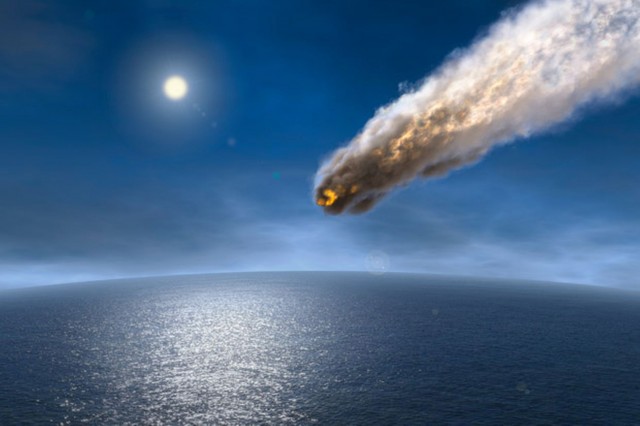
HAMMER stands for Hypervelocity Asteroid Mitigation Mission for Emergency Response. Each unmanned vehicle is expected to weigh around eight tons, which is less than the old Apollo spacecraft or the successor Orion system.
The American researchers published their conceptual asteroid deflection spacecraft in the journal Acta Astronautica. They will be presenting it at an asteroid-research conference in May.
Their study called for the deployment of a group of HAMMERs into space as soon as an asteroid is spotted heading towards Earth. The fleet will ram the stray space rock, hopefully deflecting it away from the planet.
The more time the HAMMERs have to build up speed, the better the chance of a successful asteroid deflection. If the asteroid is too big or cannot be deflected away in time by collisions, the researchers suggested that the HAMMERs be armed with nuclear weapons. A nuclear barrage could reduce the size of the asteroid or destroy it outright.
"Whenever practical, the kinetic impactor is the preferred approach, but various factors, such as large uncertainties or short available response time, reduce the kinetic impactor's suitability and, ultimately, eliminate its sufficiency," suggested the researchers. (Related: NASA’s OSIRIS-REX mission will examine samples from an asteroid, seeking clues to the origin of life.)
When all you have is a hammer...
The HAMMER study is part of a bigger effort conducted by NASA and the National Nuclear Security Agency (NNSA) to determine how much time humankind has to stop a near-Earth object (NEO) from hitting the Earth.
To save time, the researchers modeled their study upon a real-life scenario. The simulated target is the asteroid 101955 Bennu, which is 1,640 feet (500 meters) in diameter and estimated to weigh 60 million tons. Bennu is perhaps the most familiar among the thousands of NEOs within one astronomical unit of Earth. According to calculations, it has 1-in-2,700 chance of striking the Earth come the 2100s. If it hits Earth, estimates place the destructive power of the asteroid strike at around 1,150 megatons. In comparison, the most powerful human nuclear weapon is the 50 megaton Tsar Bomba.
The likeliest asteroid strike scenario suggests Bennu or a similarly-sized NEO will explode over an ocean. The air-burst will unleash tsunamis and possibly disrupt the weather due to vaporizing so much seawater. If it does hit land, the fireball could reach more than 12 miles (20 kilometers) in width. The ensuing blast wave will devastate anything within 120 miles (200 kilometers.)
"Bennu was selected for our case study in part because it is the best-studied of the known NEOs," the researchers explained. "It is also the destination of NASA's OSIRIS-REx sample-return mission, which is, at the time of this writing, en route to Bennu following a September 2016 launch," they added.
OSIRIS-REx will be studying Bennu for two years
Unlike HAMMER, the grandiosely-titled OSIRIS-REx is a purely civilian endeavor. Launched in 2016, the Origins, Spectral Interpretation, Resource Identification, Security, Regolith Explorer will be reaching Bennu in summer 2017.
The space probe will orbit the asteroid for two years of study before closing in to obtain a sample from Bennu's surface. If all goes well, the probe will return to Earth in 2023 to deliver its payload. Weighing in at 2.325 tons, the OSIRIS-REx probe cost $800 million to build and launch. If it hits Bennu, the asteroid would not notice the probe at all.
The HAMMER study team did not cite any estimates regarding the price of their conceptual spacecraft.
Read Space.news for more coverage of spacecraft news.
Sources include:
Please contact us for more information.




















